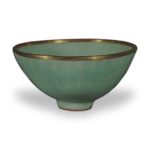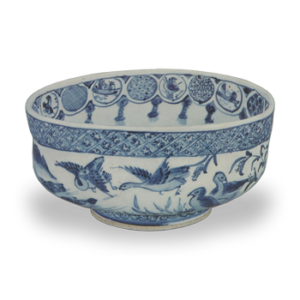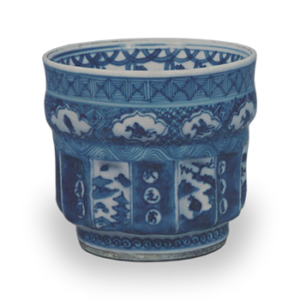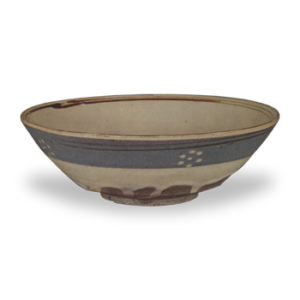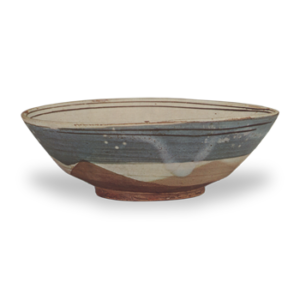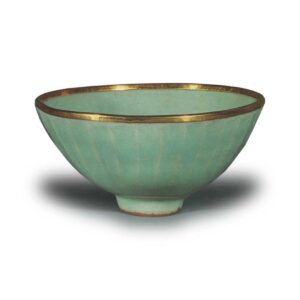
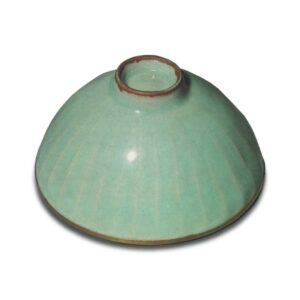
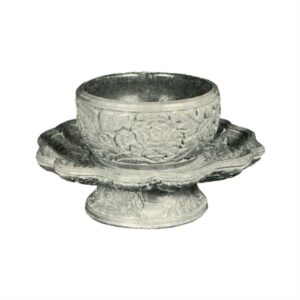

Attachments
Tenmoku-dai (stand), chrysanthemum and peony design in the shape of a ring flower
Box with tenmokudai stand, By Ryoryosai, With calligraphy in paulownia and white wood
Attributed to Inoue Seigai
Taisho Meihiki Jiten (Taisho Meihiki Book of Masterpieces)
Dimensions: Height: 6.3cm, Bore: 12.4cm, Base diameter: 3.4cm, Height: 0.8cm, Weight: 210g
Collection: Fujita Museum of Art, Osaka
The name “celadon tenmoku” is not used in academic literature. This is because celadon tea bowls in the tenmoku form do not exist. The reason why this bowl was called Tenmoku in spite of this is probably because the base of the bowl is small, as if it were a tatebana, and it is considered to be close to the Tenmoku form. At the same time, as indicated by the inscription “full moon,” the figure of a full figure in this world must have been considered to be the king of tea bowls, that is, Tianmoku, and this holy title was given to it.
The kiln was Longquan Kiln in Zhejiang. It was probably made near the end of the Northern Song dynasty (960-1279), when celadon firing techniques were perfected. Pure white porcelain clay is wheel-thrown to form a thin bowl, and a spatula is inserted on the outside to form a shinny pattern of 30 lotus petals. The sharpness of the carving, which is so consistent, is probably unparalleled in the vast amount of Longquan celadon porcelain. The entire surface is covered with a rich, powder-blue celadon glaze, and only the base of the base has been scraped away to create the earthen appearance. The glaze was applied in two or three layers, resulting in a deep and rich coloring, and the well-packed areas are reminiscent of jade.

